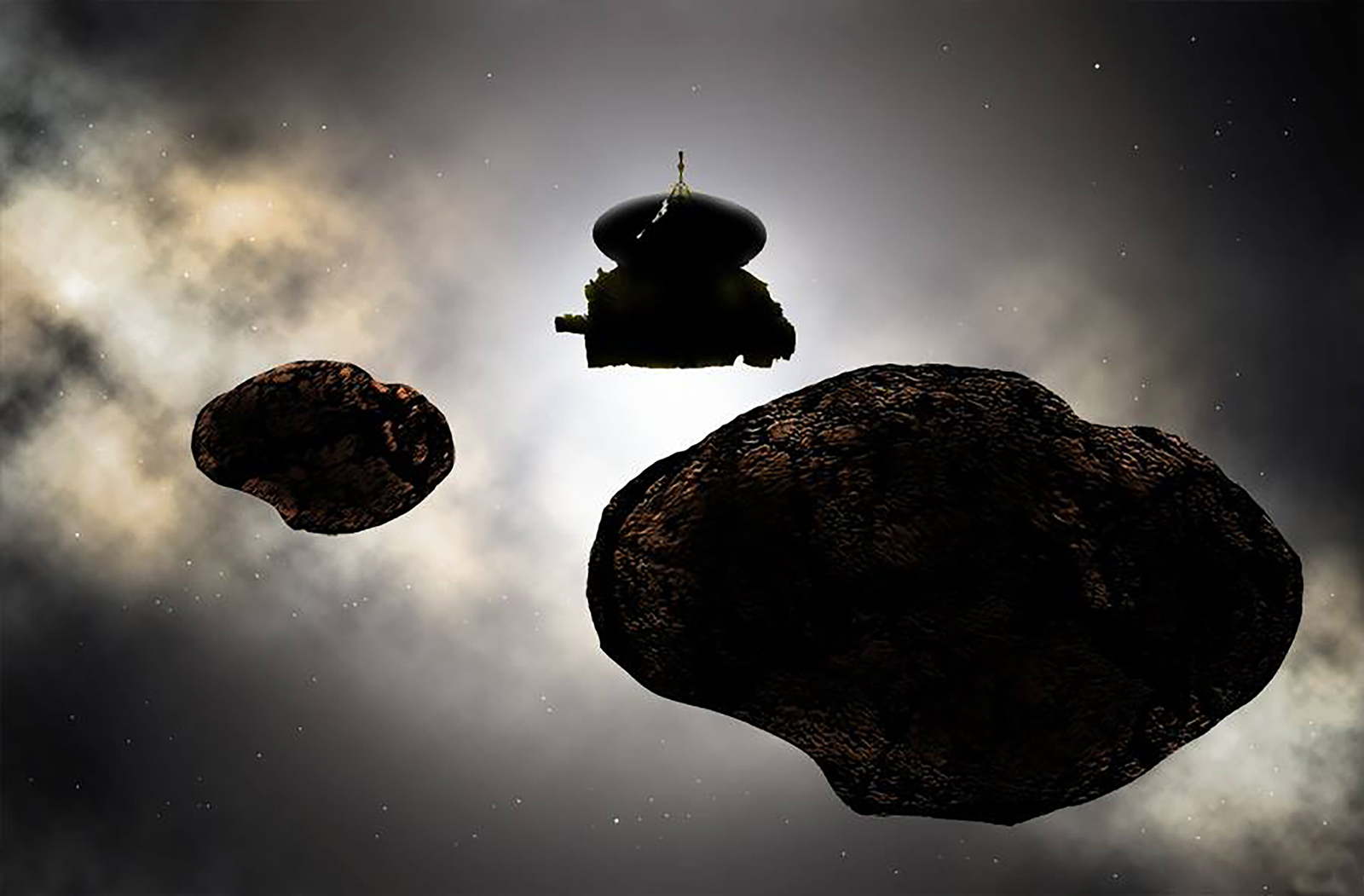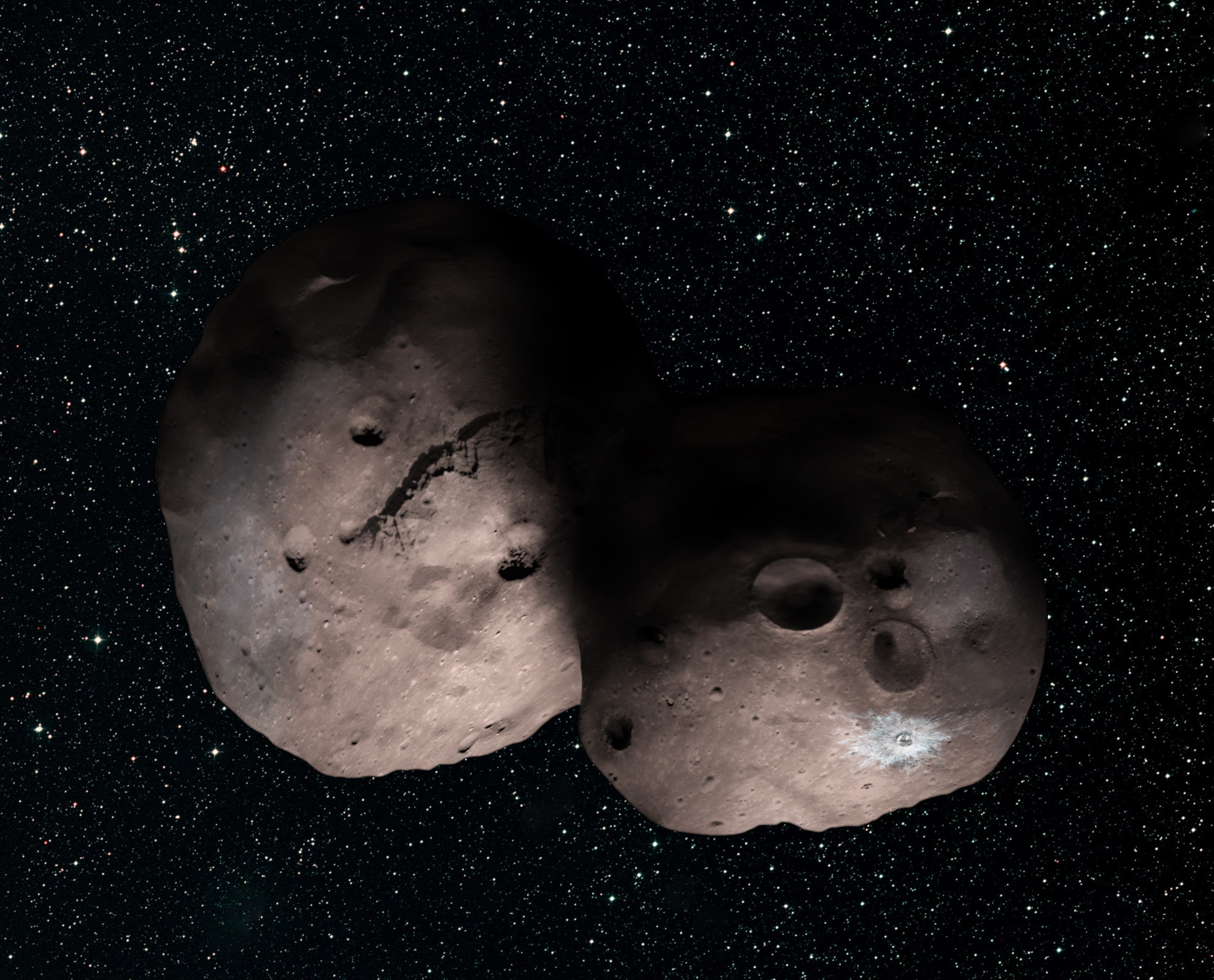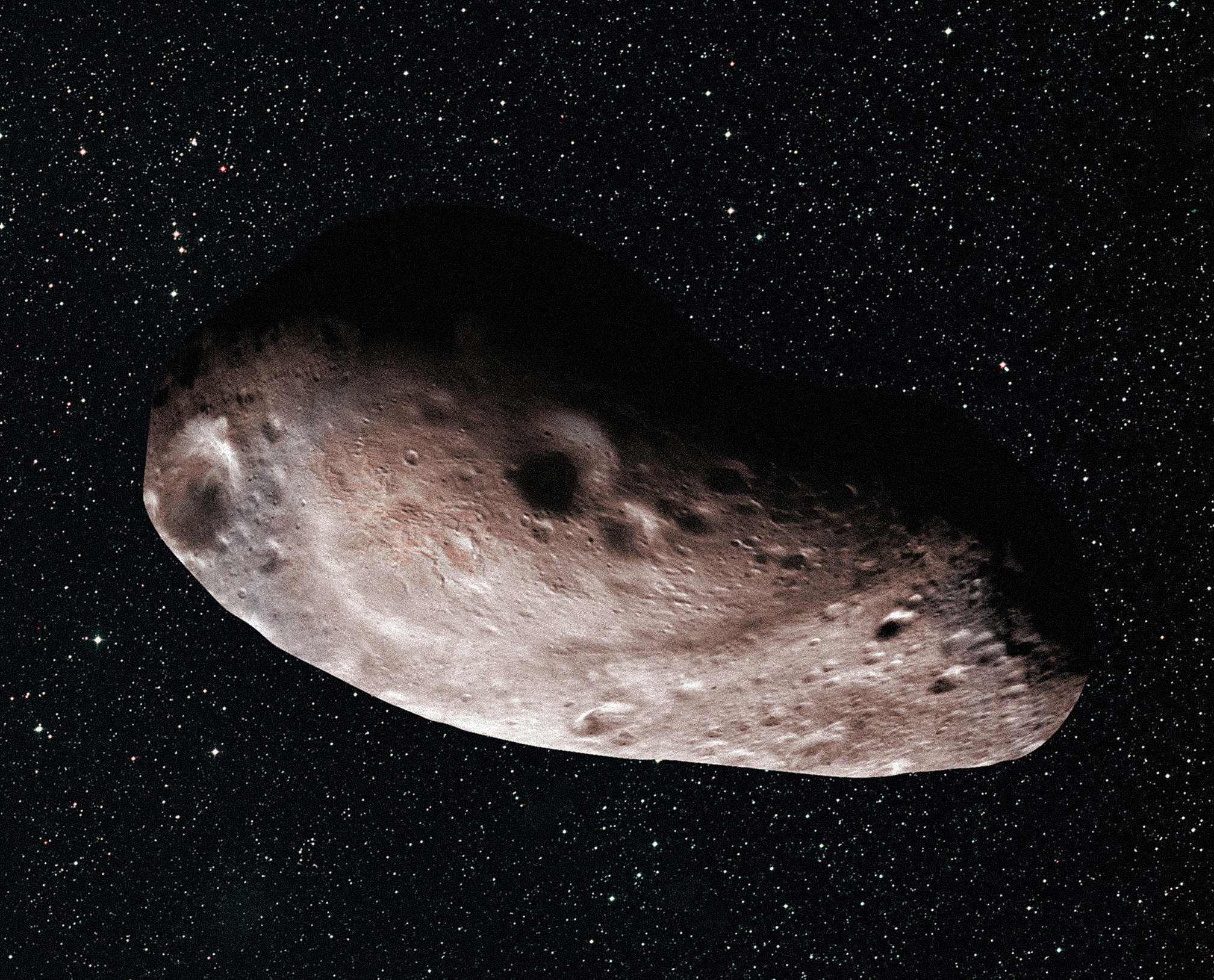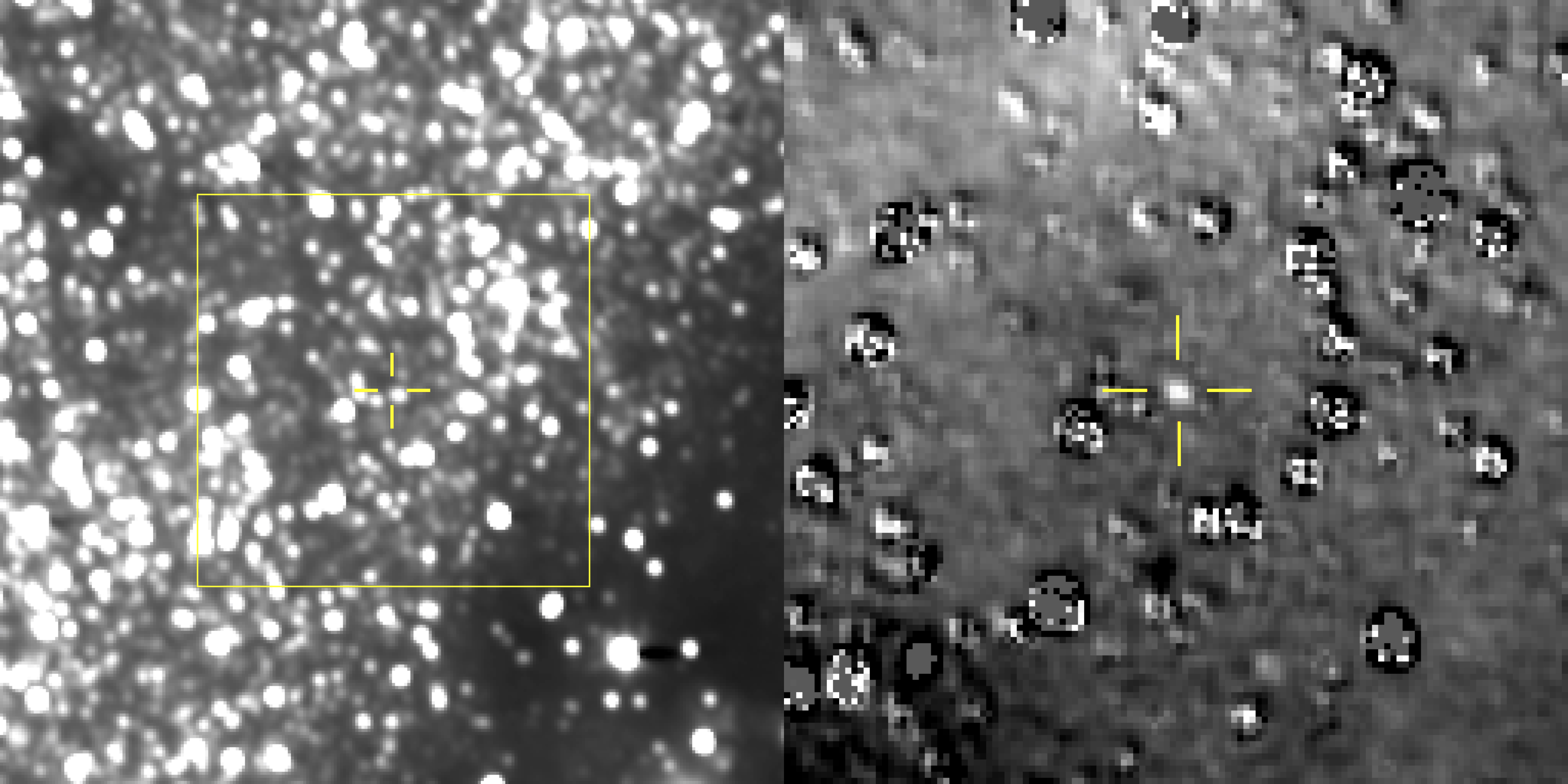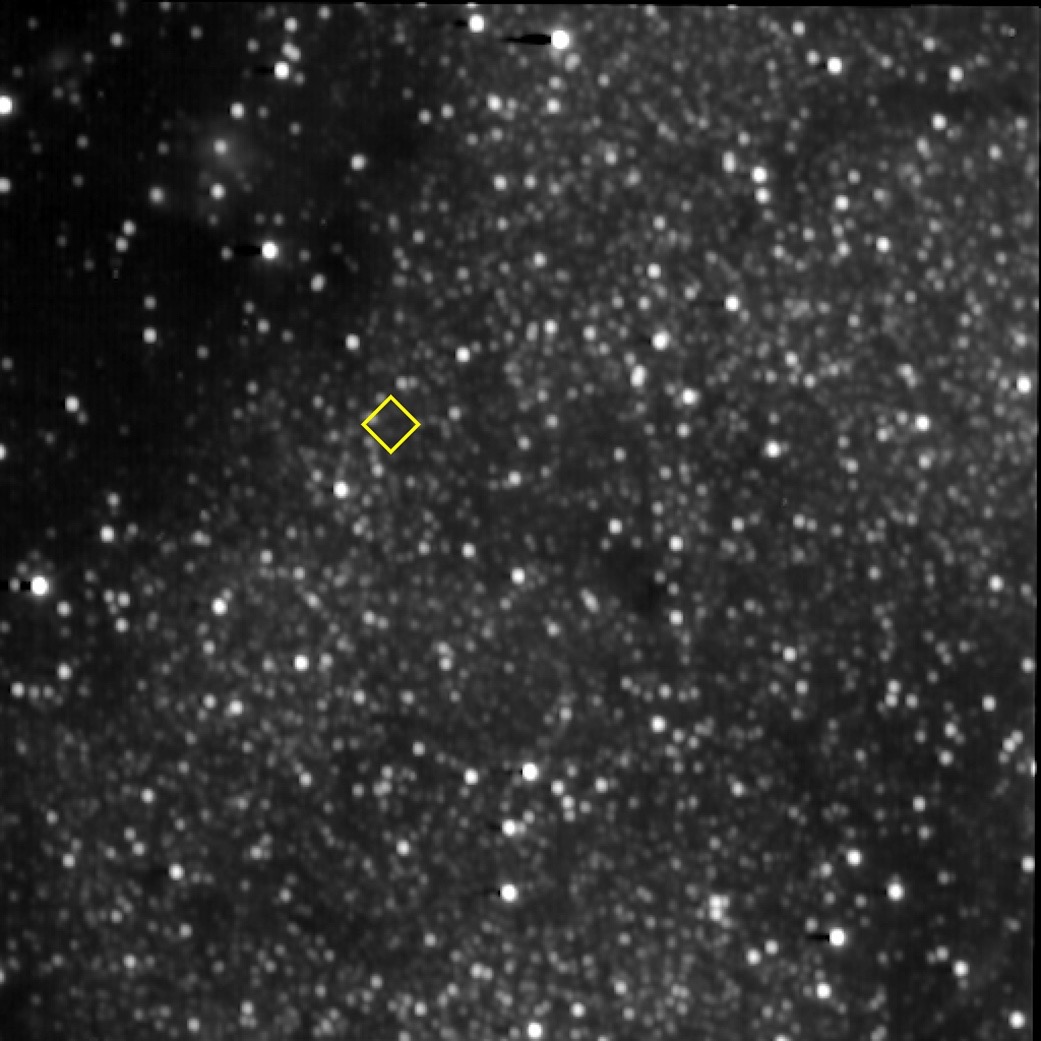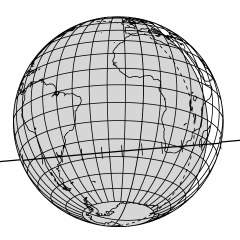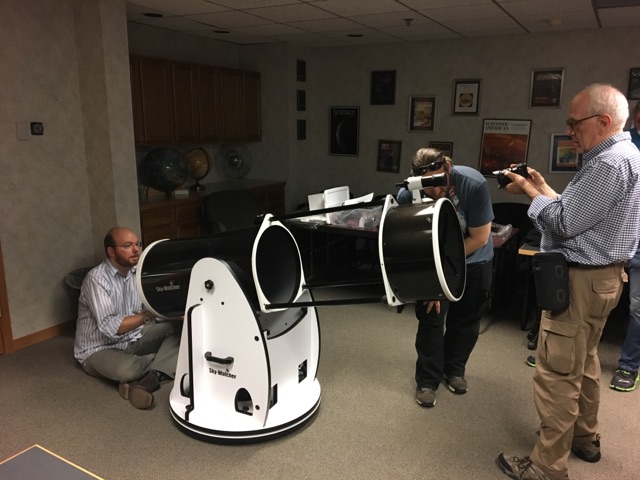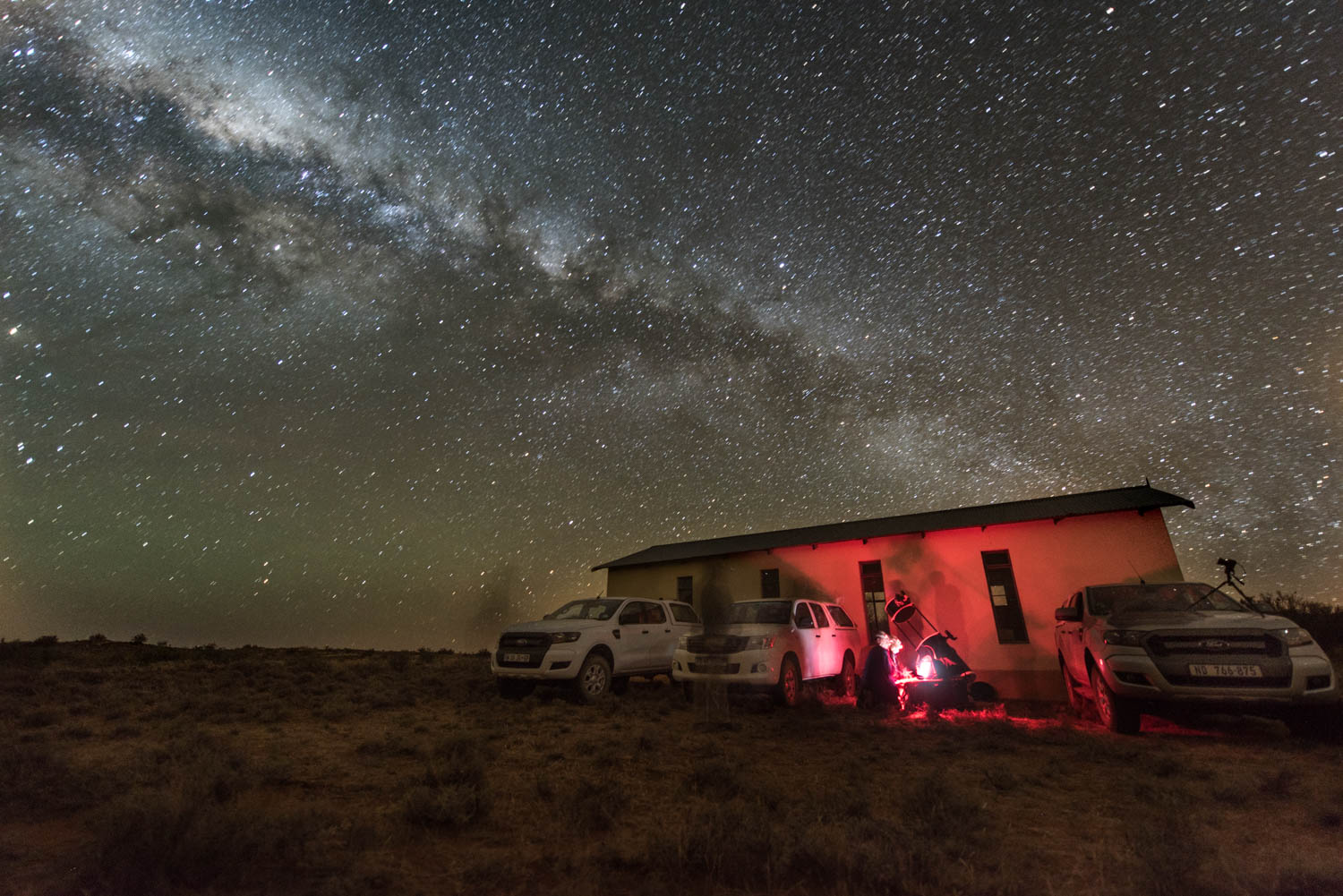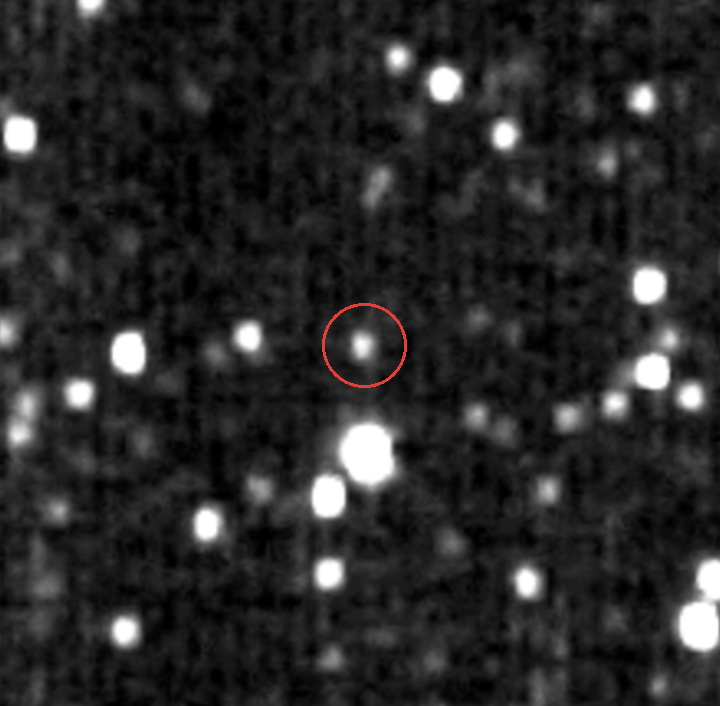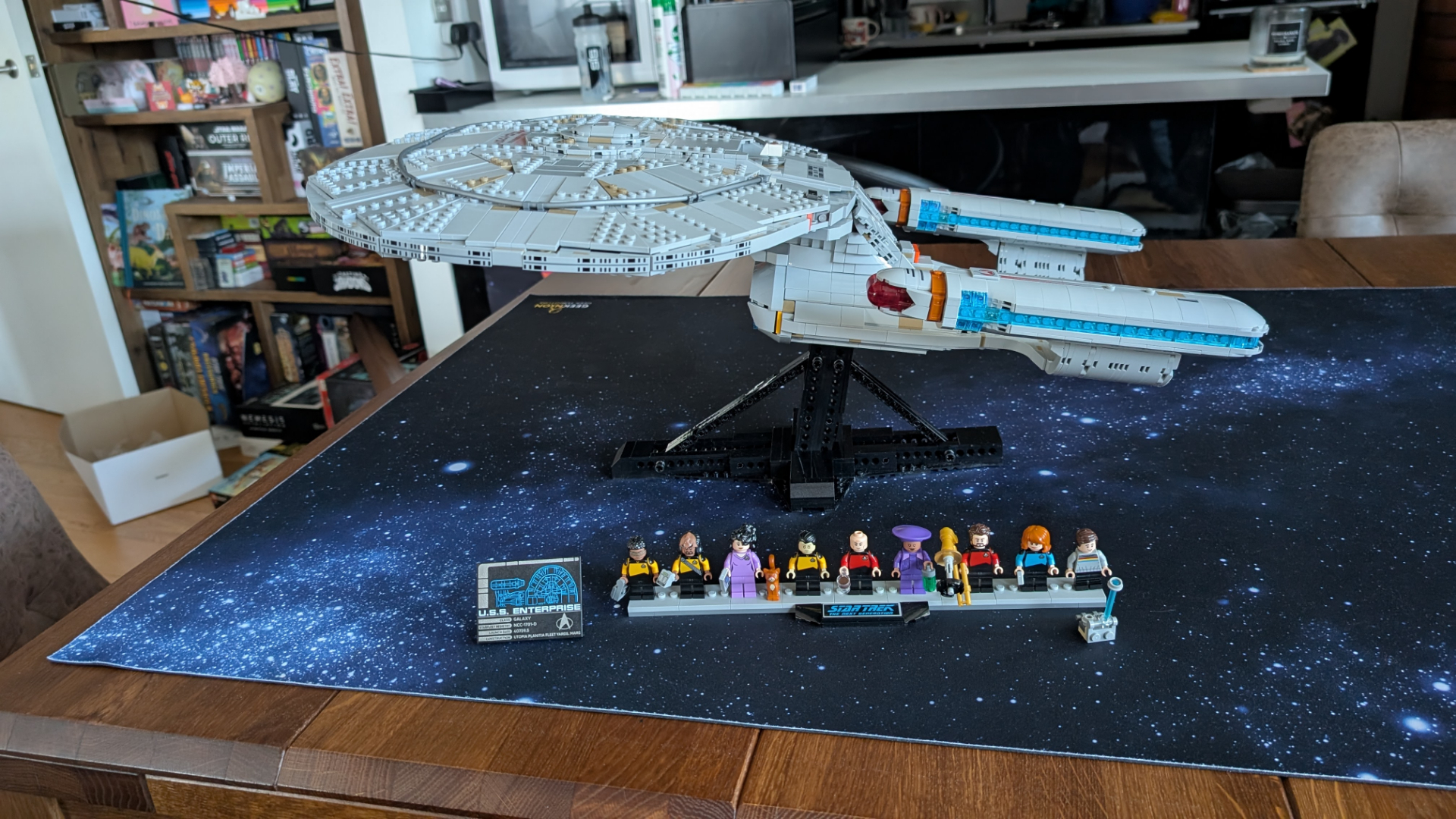Ultima Thule in Pictures: Flyby Views of 2014 MU69 by New Horizons
A Vision of Ultima Thule
Artist's illustration of NASA’s New Horizons spacecraft flying by the distant object 2014 MU69 on Jan. 1, 2019. Early observations hint at the Kuiper Belt object being either a binary orbiting pair or a contact (stuck-together) pair of nearly like-sized bodies with diameters near 12 and 11 miles (20 and 18 kilometers).
Two bodies?
One possibility is that Ultima Thule is not one, but two objects, as shown in this illustration.
A Single Target
This rendering depicts Ultima Thule as a single, rocky object.
2014 MU69
New Horizons scientists stacked 48 different images taken Aug. 16, 2018, to focus on the location of the spacecraft's next target, 2014 MU69 (left). They also subtracted out the stars in the frame to focus on the object itself (right).
New Horizons Halfway to 2014 MU69
New Horizons took a series of 10-second exposures of the background star field near the location of 2014 MU69, to prepare for the probe’s flyby of the Kuiper Belt object on Jan. 1, 2019. This composite image is made from 45 of these 10-second exposures taken on Jan. 28, 2017. The yellow diamond marks the predicted location of MU69 on approach, but the KBO itself was too far from the probe to be detected.
Occultation of Ultima Thule
In 2017, the shadow of Ultima Thule (then known still as 2014 MU69) passed across Earth, giving New Horizons scientists a chance to learn more about their target. This map shows the path of the shadow across Earth's surface.
Gearing Up
New Horizons team members here are seen preparing one of their new 16-inch (40 centimeters) telescopes for deployment to 2014 MU69 occultation observation sites in Argentina and South Africa in June 2017.
Breaking space news, the latest updates on rocket launches, skywatching events and more!
Looking for 2014 MU69
Scientists with the International Occultation Timing Association joined with NASA's New Horizons team watch an occultation of the Kuiper Belt Object 2014 MU69 from the Karoo desert near Vosburg, South Africa on June 2-3. During the occultation, the icy space rock passed in front of a distant star and was visible with a telescope for about two seconds. The Horizons spacecraft will fly past it on New Year’s Day 2019.
Kuiper Belt Object 1994 JR1
Ultima Thule is not actually the first Kuiper Belt object New Horizons has seen. First, of course, is Pluto, but the spacecraft also spotted this object, 1994 JR1 on Nov. 2, 2015.

Tariq is the award-winning Editor-in-Chief of Space.com and joined the team in 2001. He covers human spaceflight, as well as skywatching and entertainment. He became Space.com's Editor-in-Chief in 2019. Before joining Space.com, Tariq was a staff reporter for The Los Angeles Times covering education and city beats in La Habra, Fullerton and Huntington Beach. He's a recipient of the 2022 Harry Kolcum Award for excellence in space reporting and the 2025 Space Pioneer Award from the National Space Society. He is an Eagle Scout and Space Camp alum with journalism degrees from the USC and NYU. You can find Tariq at Space.com and as the co-host to the This Week In Space podcast on the TWiT network. To see his latest project, you can follow Tariq on Twitter @tariqjmalik.
